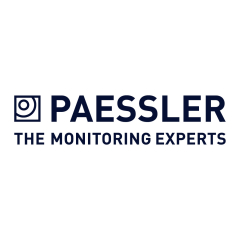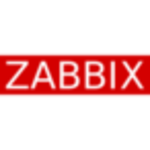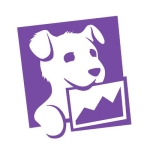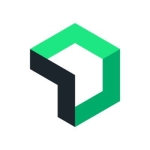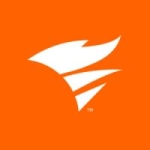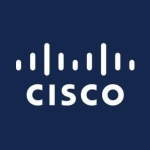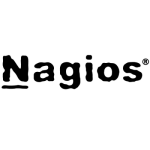What is our primary use case?
I use PRTG because I have six clouds around the world, a mixture of our own and our customer data, so I need to know when it's all up and running and when it's dead. My team is the main point of call for all the infrastructure around the world. I get called out at all times during the night and day, including this morning at five am.
How has it helped my organization?
It allows me to spend less time firefighting and patching servers, and to spend more time with our customers, fixing their environments. Ironically, some of them have moved on to the monitoring tool as well. Time is the biggest thing that I have, and it's given me that back a bit. I'm no longer spending as many nights on call-outs as I used to, so for me it's been brilliant.
It also helps our IT department to be more cost-effective. Historically, people would build servers and they'd put far too much memory in them. When we would see that they're only using one percent, we'd know someone had specified far too much and been a bit cocky with what they were doing. It definitely helps to do tuning and save resources.
In terms of feedback on our IT infrastructure, it tells us when updates haven't been applied in a while, which is not a bad thing, especially with how Microsoft has been recently, breaking stuff. PRTG been great. It has let us know when a few of our SX servers have been having little issues, things you wouldn't necessarily notice under the covers unless you started hammering the system. It's definitely prevented downtime which, at the end of the day, is what we're after. It's done well.
What is most valuable?
One of its valuable features is the fact that it handles multiple operating systems. I've started moving over to Linux and away from Microsoft. Having the guys try to catch up on their Linux skills, it has been good to have a backup to make sure that we're not missing anything. It's definitely helped us a few times to make sure that stuff hasn't fallen over. And I like the fact that it tells me when things are about to fall over, which means I can preempt it and not have to wake up at three in the morning to fix it.
The Desktop app is good, although it's a bit in your face at times, but that is what you need. I normally just have it installed on a monitor in the background, so it doesn't keep flying up on my computer when I'm in the middle of an email. Other than that, it's really good.
The overall feature is set is very good. Originally, there were a few different solutions that we were looking at. I looked at the features that PRTG had and I bought it. I realized after I bought it that it could do a lot more than I wanted it to do, which was a godsend because I was looking for another bit of software to do just part of what it was doing. I managed to get a complete system. We don't use the ticketing side because we have our own ticketing from our managed services, but for other customers, big or small, I can see how it would help out massively.
What needs improvement?
It would be good if there were better graphical interfaces when you have it on multiple monitors. The way I use it is on multiple monitors so the department can see what's actually going on with the different geographies. It would make it an easier, visually, when they're working on emails or something else, to quickly work out if something is going on, without having an alarm saying that something needs doing. That's the one thing that is - I wouldn't say lacking - but the illustrations could be better for the different geographies. Because we have so many servers, things can get lost in the fog a little bit. Maybe having a better way of showing different geographies, Flash, etc., would help.
What do I think about the stability of the solution?
The stability has been great. It even says when to do a reboot, generally. I've only ever had a couple of issues where I've left it on for too many months without rebooting it and it's gotten its knickers in a twist, but other than that it's been absolutely fine.
What do I think about the scalability of the solution?
The scalability is good. I know we don't push it to what it can do. The Remote Probe feature is definitely fantastic, especially with the different geographies we have. I can't really fault it too much. With the auto-updates it pushes out, it almost looks after itself.
The solution grows with our business. Having the miniature silo sites is very good. That's helped out quite a lot with keeping track of our clouds because we can have everything in a "tiered system." If we've got a customer who rings up and wants to check on something, we can easily navigate, see what's going on, do some predictive analysis, and then see if we can help the customer make their environment any better, or just make sure it doesn't blow up in the middle of the night.
How are customer service and technical support?
We've only had to use technical support a few times, because everything's been pretty sorted. But when we have contacted them we've literally had a call back within half an hour and the problem has been fixed, or they've walked it through and told me to read the manual.
Which solution did I use previously and why did I switch?
We used to use an old product called Servers Alive. It was good but very basic. It helped every once in a while, but it just didn't have anywhere near the kind of insights that you do with PRTG.
We knew we needed to invest in a new solution because I was getting stressed out and annoyed at the fact that I was getting called out so often, firefighting and fixing and stuff in the middle of the night, as well as doing the day job. I needed another pair of hands to be able to handle the infrastructure that was rapidly growing.
Downtime wasn't really a driving factor in our decision. We just upped and moved to the cloud. We wanted something that could keep an eye on what was going on in the back doors. That was one of the main reasons for the switch. We used to have a data center down in London, and driving down there to fix things up in the middle of the night wasn't exactly ideal. Although cloud is a little bit more expensive, regardless of what people tell you, it frees up time in the fact that you can literally rebuild stuff on the fly now, so much faster than you would if you had to procure servers. Having something keep an eye out to make sure all that is working in the background works for me.
How was the initial setup?
The setup was so easy:
- Insert IP address here.
- Is this your password? - Yes.
- Do you have a VM server? - Actually, I do, thanks.
It then told me: "This is what you've got, and this is broken." Okay, thanks then.
From the time we set up the solution until it provided feedback on our IT infrastructure would have been about 12 hours.
What about the implementation team?
I rang up and said, "I like your product," and within half an hour I had it downloaded and semi-configured and spent the next couple of days just tuning the environment. It's fantastic.
What was our ROI?
It has definitely saved the organization money. We see ROI from the fact that the company hasn't had to employ another person to back me up because I'm fixing stuff in the middle of the night. It's like having another admin there to help look at stuff.
What's my experience with pricing, setup cost, and licensing?
The pricing is not too bad. It's not massively expensive, and the ability to upscale or even downscale licenses every year is brilliant for us.
Which other solutions did I evaluate?
I tried out a few of the free solutions, but I just couldn't get on with them. Since going with PRTG, we haven't bothered looking anywhere else because it has done whatever we've needed it to do.
What other advice do I have?
Give it a try. You can do a lot with the free version that you download. But the sensors that you get with the extra packs make life so much easier because you can literally customize anything according to your whim, depending on your application or your data type. It has worked well.
In terms of the sensors and probes, there are a lot of them. It takes a while to go through them. It's probably a bit of overkill. It's a situation where if you have too many sensors running you end up knackering your network. But then again, it has the sort of metrics you're looking for. If you want to look at stuff like disk and CPU usage, or use the new stuff where it is monitoring your websites so you can pick out key elements, that's fantastic. But when it goes into bytes that the adapters are going in and out every second, that's a little bit much. Some people might want to look at that. But overall, there's so much that you can do with it. It's fantastic.
The historical data provided by the solution hasn't helped us optimize our network performance but that's because we change our infrastructure quite a lot. Historically, they would sweat the assets quite a lot, but we have moved a lot of our stuff to the cloud. So every couple of years, if we see a new operating system is out we'll migrate to it. I will have a quick look to see if there's anything that's been stolen, but we've got quite a good development team and we hope that serves us well. They're constantly upgrading it every couple of weeks, so it's always on the move. Where the solution does help is with the trends, to know what has been breaking so we can either move away from operating systems or spend a bit more money on the dev side of it to increase performance.
I would rate PRTG at eight out of ten because it has literally saved my bacon on numerous occasions in the middle of the night, making sure our production servers haven't gone out and caused our customers outages. The only reason I wouldn't give it a ten is that it's not exactly clear what some of the sensors are for, and because of the graphical interface. Other than that, as I'm using it over time, it's just getting better and better.
Disclosure: PeerSpot contacted the reviewer to collect the review and to validate authenticity. The reviewer was referred by the vendor, but the review is not subject to editing or approval by the vendor.

